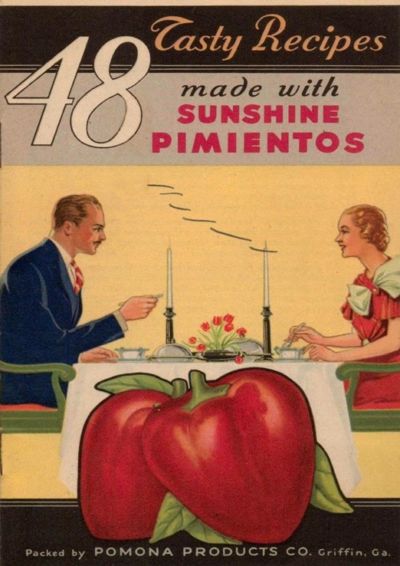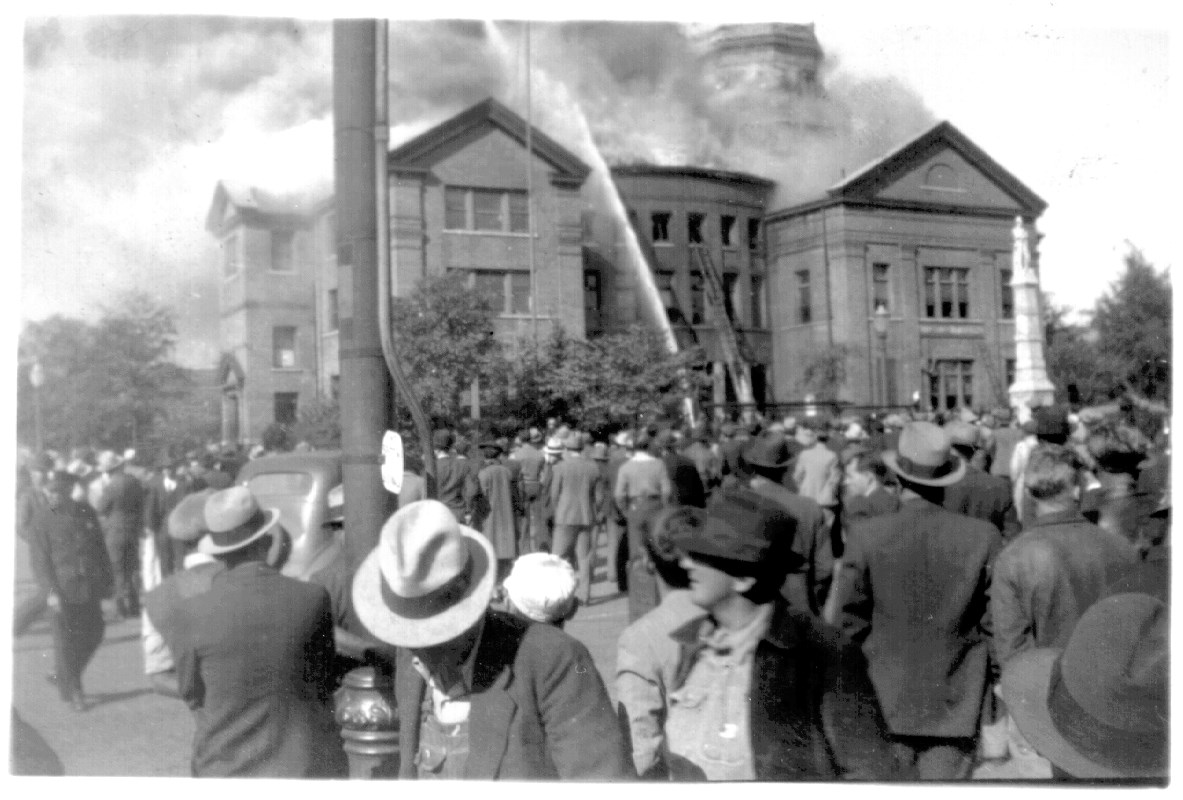When James Bond enjoyed his martini, “shaken, not stirred,” it is likely that the pimento, stuffed in the olive that garnished his favorite cocktail was grown in Troup or a neighboring county. Of course, Agent 007 is a fictional character, but our area of Georgia, in the mid-twentieth century, produced ninety percent of the world’s pimento peppers. Woodbury, in Meriwether County, was called the Pimento Capital of the World.
Samuel D. Reigel is credited with introducing the crop to Georgia farmers.

The front cover of a 1934 “Sunshine Pimientos” recipe booklet produced by the company to encourage the use of pimentos in dishes.
Starting around 1905, Reigel and his sons, George and Mark, grew sweet peppers on their farm near Griffin, Georgia. They soon dis- covered that American varieties were inferior to expensive imported Spanish pimientos, the generic Spanish term for peppers. The Riegel’s obtained seed from Spain and began to develop improved varieties. By the 1920s, their variety called Perfection was the cornerstone of a thriving pimento industry in West Central Georgia. Peppers offered an attractive alternative to cotton farmers hit hard by the boll weevil. Production peaked in 1938, with more than twenty-five thousand acres dedicated to growing the little heart-shaped peppers. The thick-skinned peppers were not suitable for the fresh market, so the Reigels perfected techniques to peel and preserve them for nationwide distribution. In their heyday, the Pomona Products Company, founded by the Reigels, shipped more than ten million cans and jars a year.
Pimento processing came to Woodbury in 1925, when Hill Brothers Corporation converted a failed vegetable canning operation to pimento production. The first year the plant contracted with farmers for three hundred acres of peppers. A new improved pepper called Truhart Perfection was introduced in 1943. By 1950, the acreage in Troup and Meri- wether had increased to more than nine thousand. The Woodbury plant, operating under the Dromedary label, employed twelve hundred workers during the July to November season. Every October between 1951 and
1969, Woodbury hosted a Pimento Festival highlighted by a parade and crowning of the Pimento Queen.
Pimentos were among the last “row crops” to hang on in our area, but unlike corn and soybeans, growing pimentos was labor-intensive. By the end of the 1970s, changing land use, and the general decline in agriculture saw the end of pimento production in Troup County. — Randall Allen




